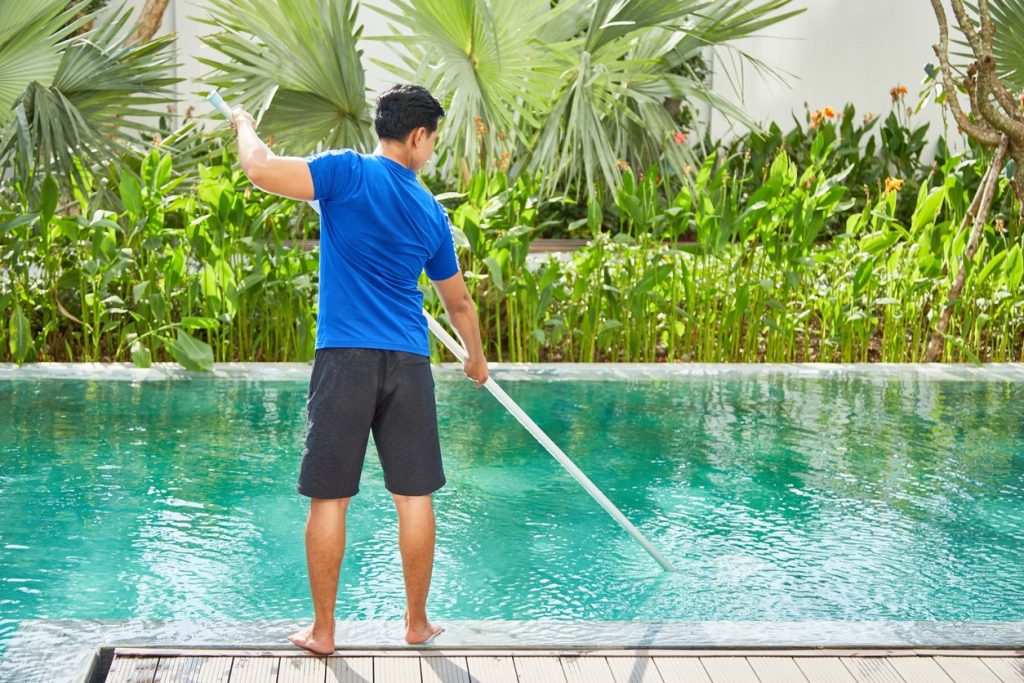Algae is one of the most annoying problems a pool owner can face. They come in many varieties and look different, but they are always a pain in the ass. Different people deal with them in various ways, and you’d be surprised, but in this case, you need various remedies for different cases.
Today we will discuss questions that bother most pool owners: what are the types of algae in pools, how to deal with them properly, and what algaecide is the best for your case? For a short description and quick comparison, you can use our comparison table, and for in-depth analysis, you can jump to detailed reviews.
Comparison Table
In this table, we have compiled four products that we consider to be the most worthy on the market at the moment. Our conclusion is based on independent research we conducted while studying algaecides. We studied over 700 reviews of more than 20 algaecide options to highlight the most worthy ones.
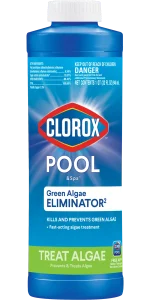 The most economically consumed + long-lasting effect | - The most cost-effective — one bottle per season on average - Provides a long-term result - The most affordable algaecide - Works fast - Fits all types of pools [above-ground, in-ground] Jump to the detailed review |
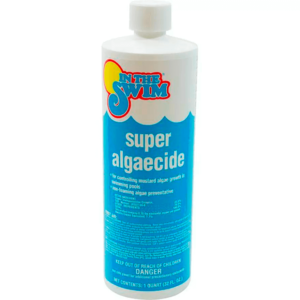 The most effective in fighting green algae | - The most efficient against green algae - No foaming in the water - Provides the most explicit instructions - Can be used for above and in-ground pools Jump to the detailed review |
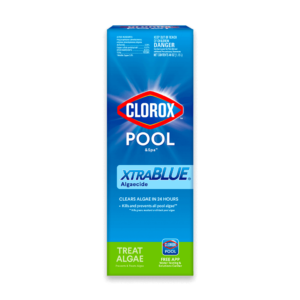 Works for any kind of algae | - The best choice for dealing with black, yellow, and mustard algae - Received the highest user rating (4.7/5.0 on Amazon) - Cleans the pool in twenty-four hours - Has a foam-free formula Jump to the detailed review |
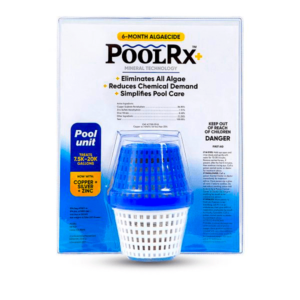 The best premium algaecide | - The best premium product for algae control - One piece is enough for six months - Helps to improve water chemistry (Pool RX balances chlorine, pH and levels) - Helps save money on chemicals as you will need less amount of them Jump to the detailed review |
What is an algaecide and when do you need it for pool
Algaecides are added to the pool to clean the water from algae as effectively as possible because chlorine and shock are not always able to cope with it. Their task is to affect the algae’s vital processes, so they can not develop and die.
This way, the bowl’s water is completely cleared of microorganisms. The rest of the work is left to the filter and the underwater vacuum cleaner.
There are several types of algaecides on the market, which differ in the main active ingredient. The most common are the following formulations:
- Based on copper sulfate. In this case, the active ingredient disrupts the process of photosynthesis in algae. The advantage of products of this group is their effectiveness against all types of algae, but frequent use of algaecide based on copper sulfate may result in unsightly stains on pool surfaces. Another disadvantage is that if the concentration of this product in the water is too high, swimmers’ hair can turn blue or green.
- Based on quaternary ammonium compounds. In addition to destroying algae walls, the active ingredient also has disinfecting and bactericidal properties, so it inhibits the vital functions of bacteria and fungi. For this reason, algaecides based on quaternary ammonium compounds are the most popular and most economical. Unlike the previous group of products, they do not negatively affect the surface of the pool and are safe for swimmers.
Since chlorine is the best treatment for algae in the pool, algaecide can be considered as an auxiliary preventive treatment. It is never used instead of chlorine disinfectant, but only in conjunction with it. For preventive purposes, algaecide is recommended to be used after every chlorine shock treatment of the pool, which is recommended in the following cases:
- When the pool is first filled with water;
- When preparing an open-air pool for winter storage, if water is left in the pool for the winter;
- After heavy downpours;
- During hot weather, when algae are growing especially fast.
Also, the use of algaecide is mandatory if the algae problem has not been prevented and it has already appeared. In this case, it is also necessary to shock the pool and then add algaecide to it.

How to choose the right one
There are many types of algaecide on the market right now, so the question arises: which one is better to take? The problem is also that most of them have good reviews and even a similar price range. So can you take anyone without thinking about it?
Not really. In our detailed reviews, we will tell you which option is better to use for which cases (because algae problems are also different), but now we will briefly list the significant points when choosing an algaecide.
- Effectiveness in fighting algae is obviously the most important feature of algaecides. Usually, we are talking about green algae, and that is where most products are targeted. But if you have problems with yellow, mustard, or black algae, not every product will work (the most efficient for now is Clorox Pool&Spa XtraBlue Algaecide (review).
- The algaecide shouldn’t cause foaming. In general, the foam will not harm you, but it is quite an unpleasant thing — both visually and sensually. On the plus side, there are enough products that don’t cause foaming, which is what we’re going to talk about today.
- Speed action of the algaecide is also essential — do you want a clean pool in a few hours or a few days? Of course, other factors — the size of the pool, the level of chlorine and pH, etc. — also influence this. But algaecide matters as well.
- Economical consumption and long-lasting effect. We are constantly trying to optimize the cost of pool maintenance and it is reasonable that this also applies to the algaecide.
In addition, it may be significant to you that the product is easy to use, has no unpleasant odour, has clear instructions, and helps you save money on other chemicals. So, now that you know what’s important in algaecides, we can start reviewing the best models.

Best algaecides for pools in detail
Clorox Pool & Spa Algae Eliminator
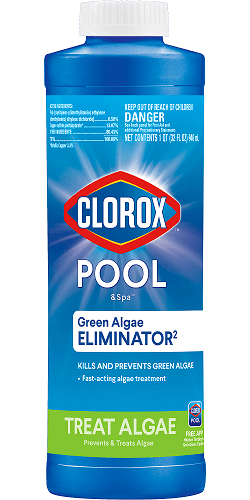
The most economically consumed + long-lasting effect
Pros
- The most sparingly consumed — one bottle can serve the whole season
- Provides a long-lasting effect (depending on the region, one dose works for a week or even the whole season)
- The most affordable option
- Works fast — clear pool in hours in most cases
- Suitable for all types of pools
Cons
- Can cause foaming if you use too much of the product
- Doesn’t work for yellow, mustard, and black algae (use Clorox Pool&Spa XtraBlue Algaecide (review) for it)
If you’re looking for a product that will help you deal with green algae while being economical to consume, your best bet is Clorox Pool & Spa Algae Eliminator. In general, Clorox is one of the most well-known brands when it comes to cleaning products. It’s affordable, effective, and simple.
In this case, Algaecide will become part of your weekly pool routine. That being said, we want to emphasize that it is suitable for all types of pools, even saltwater pools. Yes, it’s not designed to deal with black or yellow algae-like Clorox Pool&Spa XtraBlue Algaecide (review), but it does a great job with green algae.
Users very rarely have problems with this product, in rare cases, it begins to foam. But since this usually does not happen, we assume that this happens if you exceed the amount of product when adding it to the pool. Therefore, we ask that the instructions be followed responsibly.
In The Swim Pool Algaecide

The most effective in fighting green algae
Pros
- The most effective in fighting green algae
- Doesn’t cause foaming in water
- Has the clearest instructions
- Can be used for above-ground and inground pools
Cons
- It’s a copper-based algaecide, so it can sometimes dye your hair or clothes blue or green
- Not recommended for use in well water (because of the copper — it’ll add more metals to your water)
For pool owners looking for a super effective green algae remedy that is sure to not cause foam, we suggest looking at In The Swim Pool Algaecide.
This is a high copper concentration product, so you only need four ounces for every 10,000 gallons of water initially and two ounces for the same volume for a maintenance effect. In addition, the manufacturer claims that you can swim safely immediately after adding this substance to the pool. However, we still recommend waiting a while until the algaecide is completely dissolved in the water.
The downside of using this algaecide is its effect on your hair or clothes, or even the pool itself — yes, it can turn blue or green. But this is not always the case, but if you exceed the dose of the product or use it too often (the recommended frequency is once every two weeks). If you are still worried that this effect is possible, consider a Pool RX Algaecide (review), which is sure to have no such side effects.
Clorox Pool&Spa XtraBlue Algaecide
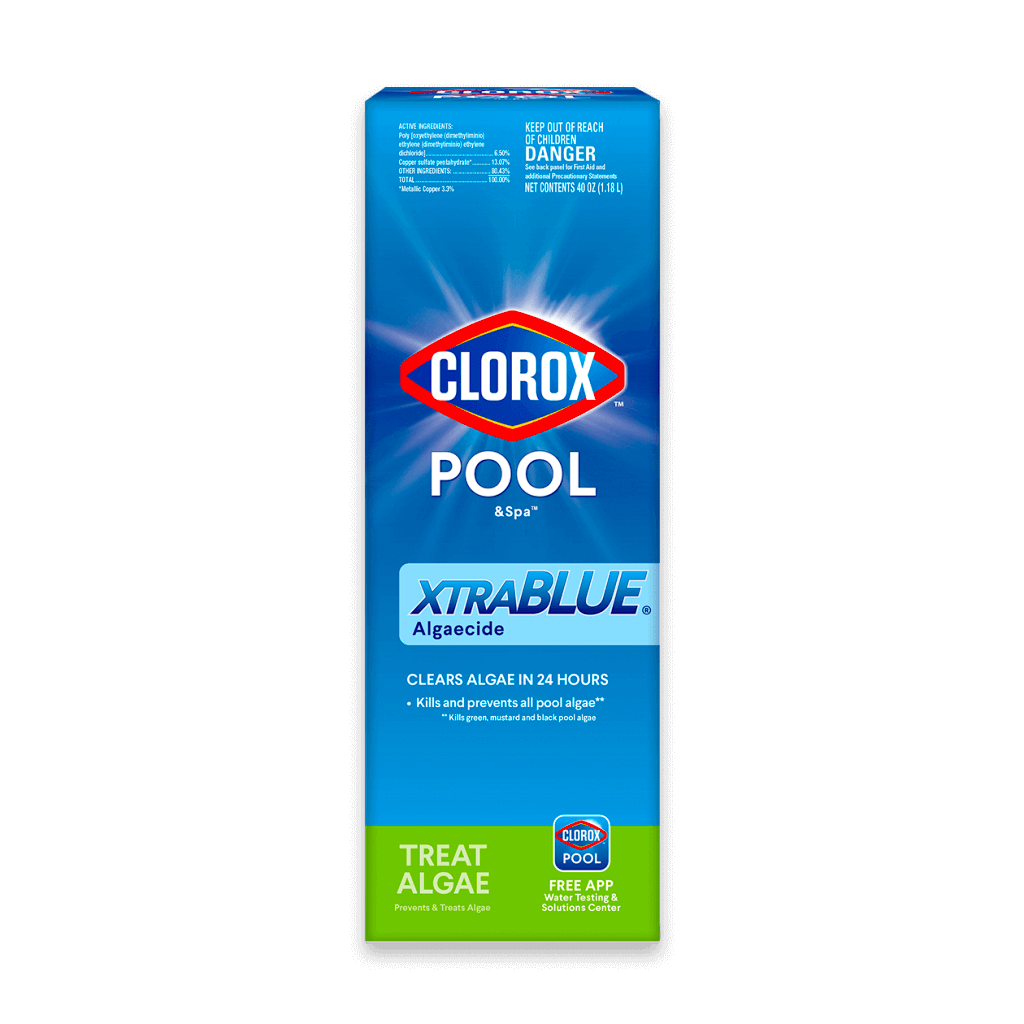
Works for any kind of algae
Pros
- The best option to fight black, yellow & mustard algae
- Received the highest rating from users (4.7 out of 5 based on 1,785 reviews)
- Clears the pool in 24 hours
- Has a non-foaming formula
Cons
- Can temporarily make the water cloudy
- It is not very economical to use and therefore comes out a bit expensive
For pool owners looking for heavy artillery, we’ve put together a report on Clorox Pool&Spa XtraBlue Algaecide. You’ll need this stuff in case you run into black, yellow, or mustard algae, not just green algae.
Usually, people take this product when nothing else helps, but we advise you not to delay and not to waste your money on ineffective things if you are faced with something more complicated than green algae. Yes, you’ll pay a little more than average for XtraBlue, but you’ll get the results you want in as little as 24 hours. It works in 95% of cases and we have no reason to doubt that it is the strongest algaecide we have reviewed today.
Of course, you don’t need to spend money if the problem is only with green algae — then you can safely take Clorox Pool & Spa Algae Eliminator (review) or In The Swim Pool Algaecide (review) and be sure of the result, too.
Pool RX Algaecide

The best premium algaecide
Pros
- The best premium product to fight algae
- One unit lasts for six months
- Improves water chemistry (the water becomes less sensitive to chemical level changes with Pool RX)
- Helps to save money on chemicals (you will need less amount of chemicals to balance the water)
Cons
- It’s pretty pricey
- Sometimes one piece lasts less than six months (depending on how you take care of the pool and whether you chose the right size)
For fans of various devices that simplify life and fight against algae, we suggest opting for Pool RX Algaecide. This algaecide is radically different from all the others in our review.
One such thing will last your pool for up to six months, provided you choose the right size and keep an eye on the water chemistry. Its main perks besides algae control are that it will help you maintain a balance of chlorine, pH, and total alkalinity in the pool and save on other chemicals.
It is a little expensive compared to Clorox Pool & Spa Algae Eliminator (review), but if you have a problem with green algae and the opportunity to buy such a thing, you certainly will not regret your choice.
How to use algaecide for pool properly
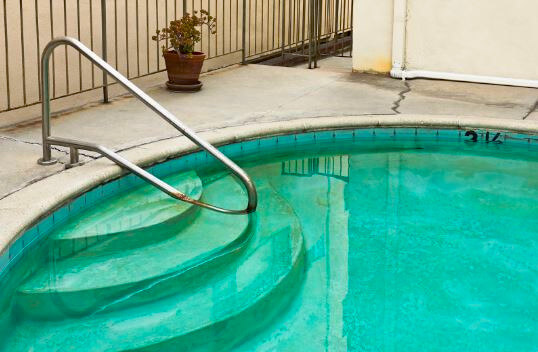
Take a look at the instructions to find out how to remove algae from your pool with an algaecide. It is often described on the label of the container containing the algaecide.
Three options should be noted in the manual:
- Clean the walls and bottom before you start the pool. Simply dilute the correct amount of the substance in a bucket and use a sponge to apply the solution to the surface. This is a kind of prevention;
- Adding clean pool water. If your pool is clean, you still need to add cyanobacteria chemicals to it periodically. If you don’t, however, you’ll have to resort to the third method;
- Shock cleaning. When your pool has started to turn green or is already completely overgrown, first set the ph level to normal, then add chlorine and a shock dose of algaecide. This approach will get rid of the vegetation in your artificial pond.
There is nothing complicated about it. The main thing is to consider the size of your pool and the concentration of the substance to be added. The question remains: How do I add the algae remover?
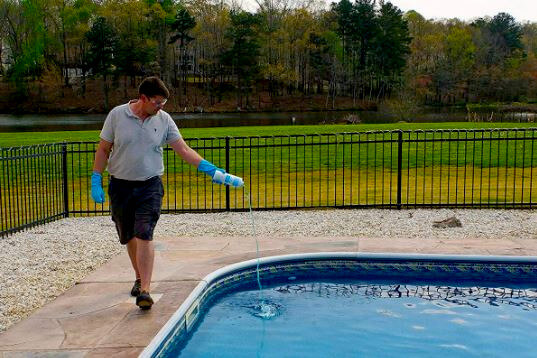
There are two options here. They do not differ particularly in effectiveness, so you can apply the one that is more convenient for you.
- Calculate the required amount of chemical agent according to the volume of your bowl. Dilute it in a bucket of water, and then pour the fluid from the bucket around the perimeter of the pool.
- We also measure the desired volume of algaecide for the pool and then pour it immediately into the water. But do it in a place where there is a nozzle, which returns water cleaned by the filter.
As you can see, the methods are very similar. The point is the same — evenly distributing the drug throughout the pool as quickly as possible.
Summary
Algae control is not necessarily as complicated and annoying as it sounds. With the right algaecide, taking care of your pool can be easy and enjoyable, and you’ll have more time to enjoy your swim.
In this article, we discussed the best algaecides for pools according to our research, so we suggest you take another final look at them before buying:
Algaecide |
|
 |  |
XtraBlue Algaecide | Algaecide |
 |  |
FAQ
🧐 What kills algae in a pool fast?
Shock along with algaecide is the fastest way to kill algae in your pool.
👀 Do I use shock or algaecide first?
Shock is always added before algaecide (you also have to wait until the chlorine level is normal).
🤷♀️ How do I get rid of stubborn algae in my pool?
If you have a problem with green algae, the most effective remedy is In The Swim Pool Algaecide. If you suffer from black, yellow, or mustard algae, the Clorox Pool&Spa XtraBlue Algaecide will help.
💬 Why does my pool keep getting algae?
Algae spores are constantly entering the pool due to wind, rain, or even contaminated bathing suits or pool cleaning accessories.


